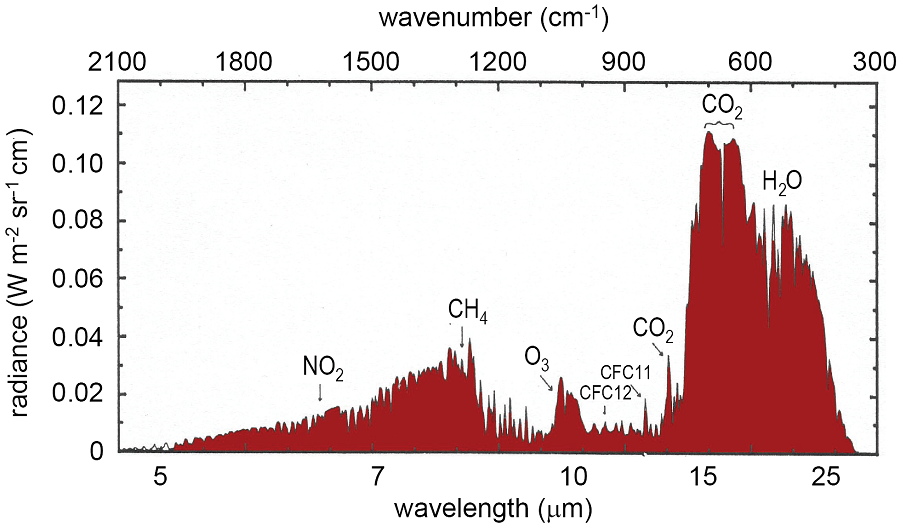2. Thermal Radiation
The atmospheric back radiation
Infrared measurements from the ground towards the sky show how the emitted radiation from the Earth's surface is partly prevented from entering space by the greenhouse gases in the atmosphere. These emissions from the Earth's surface warm up greenhouse gases. This leads to a strong infrared brightness in the spectral ranges where they absorb and where they have a larger emissivity. This creates the atmospheric back radiation.
In the diagram, the spectral ranges are labeled in which nitrogen dioxide (NO2), methane (CH4), ozone (O3), carbon dioxide (CO2) and water vapour (H2O) radiate in the direction of the Earth's surface.
Furthermore, the emission lines of substance used as a coolant in refrigerators, trichlorofluoromethane (CFC-11) and the substance used in aerosol sprays, dichlorodifluoromethane (CFC-12) can be seen. Industrial use of these halogenated hydrocarbons are now banned because they are very strong greenhouse gases and also deplete the ozone in the stratosphere.

Infrared spectrum of the back radiation measured on the ground. The wavenumber is the inverted wavelength 1/
Source: Justus Notholt, University of Bremen, edited.
